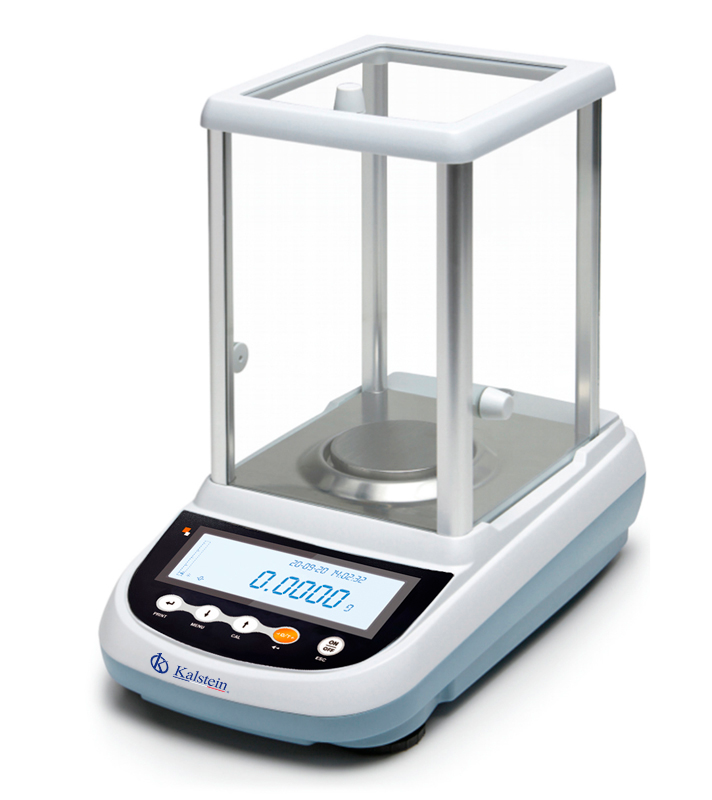Laboratory scales are devices that allow to determine the weight of a body, that is, they measure the mass of a body under a very small range of uncertainty, therefore, they usually offer very accurate measurements, reason that makes them essential instruments to carry out analytical, chemical and formulation operations in industries, pharmaceutical and quality control laboratories.
Since they are laboratory equipment of great precision in their measurements, they are usually located inside a protective glass or plastic box, so that their operation is affected by factors such as the movements of the support in which they are or the air currents, as well as the temperature or the ambient pressure. Likewise, it is recommended that the sample despite be at room temperature, in order to avoid that the natural convection can form air currents inside the receptacle and obtain erroneous results.
How does a lab balance work?
Laboratory balances are usually composed of a single charge receiver (dish) where the object to be measured is deposited. A load cell that determines mass from the force exerted by the body on the load receptor. The mass measures the amount of material present in a given element, this parameter is independent of its location and remains constant from its environment, being the kilogram the unit of mass used in the International System (SI). While the weight of an object is the gravitational force exerted on its mass and the SI weight unit is the newton.
Laboratory balances use the action of gravity to determine mass. They are equipment that provides excellent repeatability and rapid weight stabilization, so they are considered measuring instruments specially designed for laboratory use.
Types of laboratory balances
In general, there are two large groups of balances, such as mechanical scales and electronic balances, but, speaking specifically of laboratory balances, we find a different variety, based on the different measurement systems they use. In this group we find:
- The granary balances: They have a capacity of 2,600 grams and a slower weighing process. These scales have a sensitivity up to 0.01 grams, having the ability to determine the mass of both objects and gases, and are used in many laboratories as auxiliary tools, because their accuracy is lower than that of the analytical balance, but has greater capacity than it.
- Analytical balances: These are equipment with a very low error margin and with a capacity of 200 grams, specially designed to measure small masses, in a range less than the milligram. In the case of digital models, their sensitivity reaches up to the ten thousandth of a gram (0.0001 grams, or 0.1 milligrams). Electronic analytical balances do not actually measure actual masses, but rather analyze the force required to counteract the mass being measured. To achieve this, an electromagnet is used, which produces that accessory force and is measured, until it is able to counteract the mass of the object.
- Semi-micro balances: These are balances that reach sensitivities of up to 0.01 milligram, and have a capacity of 100 grams and high operating speed, or micro scales, which have the capacity to contain up to 30 grams, with a sensitivity that reaches 0.001 gram.
What does Kalstein offer you?
Kalstein is a manufacturer of medical and laboratory equipment of the highest quality and the best technology at the best PRICES in the market, so you can make your PURCHASE confidently with us, knowing that you have the service and advice of a company specialized in the field and committed to provide you with safe, economical and effective options to perform your functions in the right way.
This time we present our Semimicro Analytical Balance YR053487 // YR053492. This new instrument has state-of-the-art technology and has the following characteristics: HERE
- Recipe database: 99 data can be stored
- Automatic internal calibration
- Tara/count/percentage test/animal weighing
- Baud rate is adjustable/density function
- Unit conversion (g/mg/ct/oz).
- Multiple languages: English/German/French/Italian/Spanish/Portuguese
- Keep weight values in LPG/ISO format, including date, time, and serial number
- Plastic Protective Cover for Keyboard
- Adjustable speed/sensitivity
- Overload alarm/fault alarm/level indicator
For more information we invite you to take a look HERE


